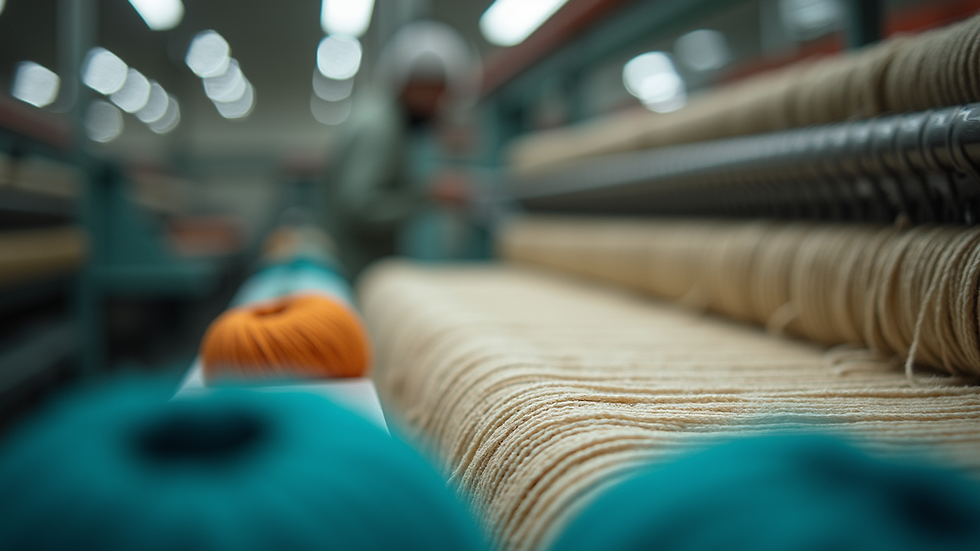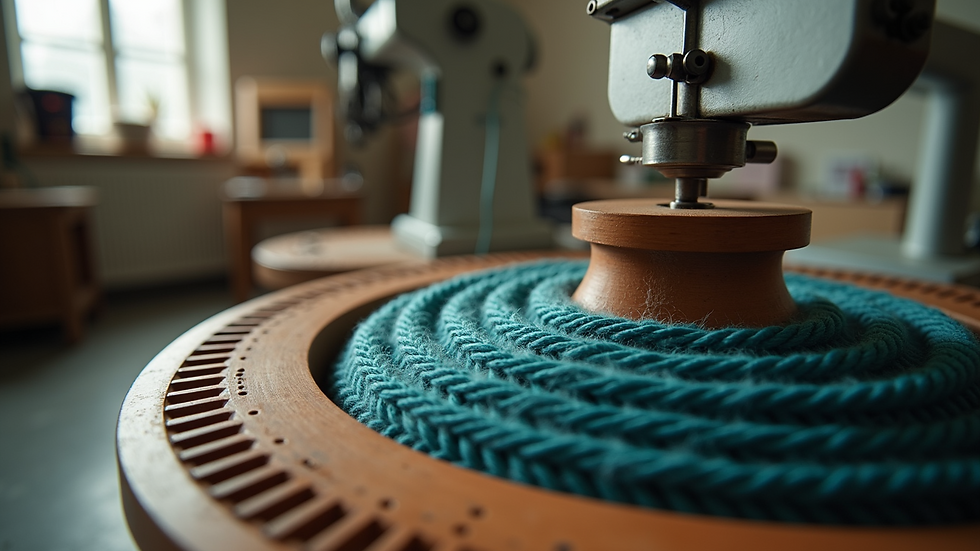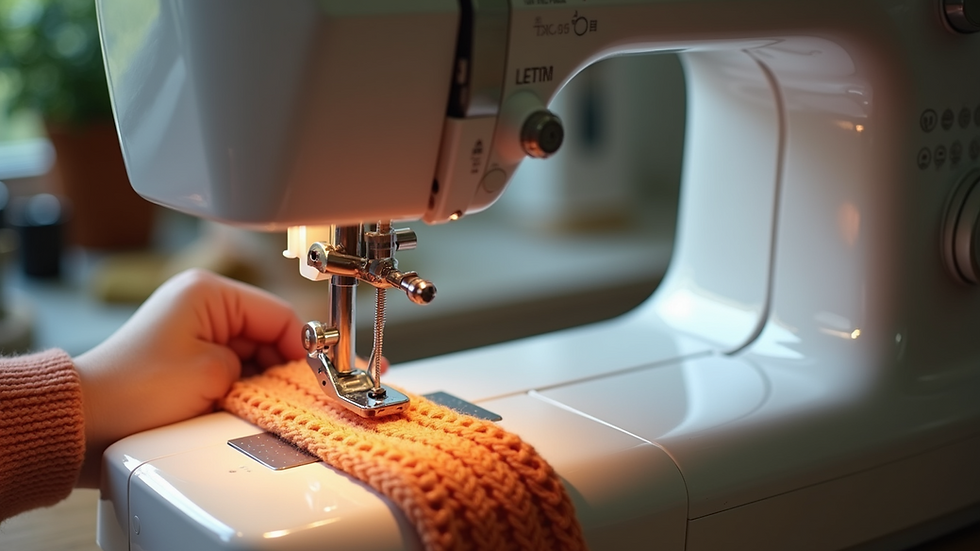What to Look for When Buying a Knitting Machine
- helenB-a
- Aug 12
- 4 min read
Knitting machines can transform your crafting experience, allowing you to create beautiful garments and accessories faster and with more precision than hand knitting. Whether you are a beginner or an experienced knitter, choosing the right knitting machine is essential to meet your needs and skill level. This guide will walk you through the key factors to consider when buying a knitting machine, helping you make an informed decision.
Understanding Different Types of Knitting Machines
Before diving into specific features, it is important to understand the main types of knitting machines available. There are primarily two categories:
Flatbed Knitting Machines: These machines have a flat needle bed and are ideal for producing flat pieces of fabric such as scarves, blankets, and panels for sweaters. They are versatile and often used by hobbyists and professionals alike.
Circular Knitting Machines: These machines knit in the round, creating seamless tubes of fabric. They are perfect for making hats, socks, and tubular garments quickly.
Each type has its advantages and limitations. Flatbed machines offer more design flexibility, while circular machines are faster for specific projects.

Key Features to Consider in Knitting Machines
When selecting a knitting machine, several features will impact your experience and the quality of your finished products. Here are the most important ones to evaluate:
Needle Count and Gauge
The number of needles determines the width of the fabric you can knit. More needles mean wider pieces. Gauge refers to the distance between needles and affects the fineness of the knit. Fine gauge machines produce delicate fabrics, while coarse gauge machines are better for chunky yarns.
Machine Size and Portability
Consider where you will use your knitting machine. Some models are compact and portable, suitable for small spaces or travel. Larger machines may offer more features but require dedicated space.
Manual vs. Electronic Operation
Manual machines require you to move the carriage by hand, which can be satisfying but physically demanding for large projects. Electronic machines automate many functions, allowing for complex patterns and faster knitting but at a higher cost.
Pattern Capabilities
Some machines come with built-in patterning options or can be connected to software for custom designs. If you want to experiment with intricate patterns, look for machines with punch cards or electronic patterning.
Yarn Compatibility
Check the types of yarn your machine can handle. Some machines are limited to specific yarn weights or fibres. Versatility in yarn choice expands your creative possibilities.
Maintenance and Support
Knitting machines require regular maintenance to keep them running smoothly. Look for models with accessible parts and good customer support. Availability of spare parts is also crucial.
Budget
Prices vary widely depending on features and brand. Set a budget but be prepared to invest in quality to avoid frustration and frequent repairs.

What is the easiest knitting machine to use?
If you are new to machine knitting, ease of use is a top priority. Some machines are designed specifically for beginners, with simple controls and clear instructions.
Manual flatbed machines with fewer needles and basic functions are often the easiest to learn on. They allow you to understand the fundamentals without being overwhelmed.
Electronic machines with user-friendly interfaces can also be beginner-friendly if you are comfortable with technology. They often include tutorials and automatic patterning.
Brands known for beginner models include Silver Reed and Brother, which offer reliable machines with good support.
When choosing the easiest knitting machine, consider your comfort with manual vs. electronic operation and the types of projects you want to create. Starting with a simpler machine can build your confidence before moving to more advanced models.

Where to Find Quality Used Knitting Machines
Buying a new knitting machine can be expensive, especially if you want advanced features. A great alternative is to look for used knitting machines. These machines often come at a fraction of the cost and can be just as reliable if well maintained.
When purchasing a used machine, consider the following:
Check the condition carefully: Look for signs of wear, rust, or broken parts.
Ask about maintenance history: Machines that have been regularly serviced are more likely to perform well.
Test the machine if possible: Ensure the carriage moves smoothly and needles function correctly.
Buy from reputable sellers: Trusted dealers or knitting communities can offer better guarantees.
Used machines can be a smart investment, especially if you want to try different types without a large upfront cost.
Tips for Getting Started with Your Knitting Machine
Once you have your knitting machine, here are some practical tips to help you get started:
Read the manual thoroughly: Understanding your machine’s features and maintenance needs is crucial.
Start with simple projects: Practice knitting flat panels or basic scarves before attempting complex patterns.
Use recommended yarns: This helps avoid jams and ensures smooth operation.
Join knitting machine groups or forums: These communities offer valuable advice and troubleshooting tips.
Keep your machine clean and oiled: Regular maintenance extends the life of your machine.
By following these steps, you can enjoy a rewarding knitting experience and create beautiful handmade items.
Choosing the right knitting machine involves balancing your skill level, project goals, and budget. Whether you opt for a new or used machine, understanding the key features and options will help you find a machine that inspires creativity and delivers excellent results. Happy knitting!




Comments